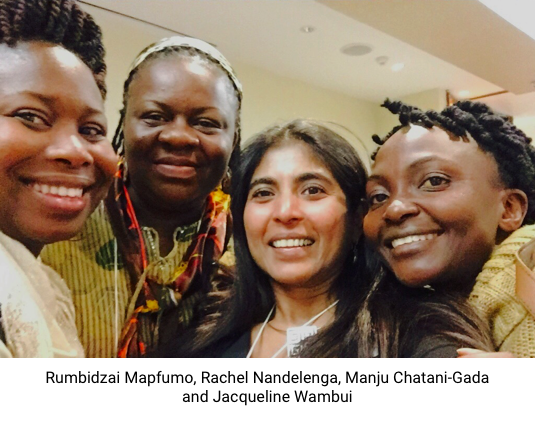May 6, 2016
Seventy-five advocates from across Africa—friends, allies, researchers—came together for a one-day meeting in Johannesburg on April 14 to discuss the recent dapivirine ring results, what they mean in the broader context of women’s HIV prevention, what comes next and key milestones to plan for.
The recently released results of the dapivirine vaginal ring for HIV prevention demonstrated, for the first time, that an ARV-containing vaginal ring could prevent HIV acquisition. The trial data caused celebration and immediate conversation about what would happen next given that the trial showed both that the ring works and that there may be real challenges with adherence, particularly in younger women.

With new programs, funding initiatives and research specifically targeted for women and girls, this workshop convening was an important juncture to pause, take stock, consider the next few years and plan key advocacy priorities. The discussions highlighted the exciting and complicated road ahead for rings and for prevention options for women generally.
This meeting provided an opportunity to unpack and interpret the dapivirine ring results, understand and interrogate next steps, situate the next two years for women’s HIV prevention (research, implementation and funding), and identify advocacy opportunities and areas for further engagement.
Two young women living with HIV set the stage for the day with their personal stories and perspectives on where HIV prevention sits in the context of the lives of young African women. Their stories became a frame for the day—recognizing the special needs young people have for contextualized education about HIV and sexuality, but more importantly that young women are the most powerful champions and MUST be involved in designing and delivering any interventions and decision-making processes that impact their lives.
There was rich discussion on advocacy priorities for the next year or so and what is needed to ensure that women’s prevention is prioritized. Two of the issues raised underpin the way forward for women’s HIV prevention and serve as a call to action for those attending this meeting and other communities across Africa: (1) the need to roll out PrEP now as we wait for rings; and (2) the need to revive activism in the HIV prevention movement.
One of the most important takeaways was that as we consider the exciting biomedical prevention interventions to change the trajectory of the epidemic—race, gender and the unique aspects of women’s lives will continue to affect access to care and prevention. It is critical to situate the research and access in the realities of women’s, and especially young women’s lives, and that context is always important.
Please visit www.avac.org/ring-results-and-next-steps to access meeting presentations and materials.